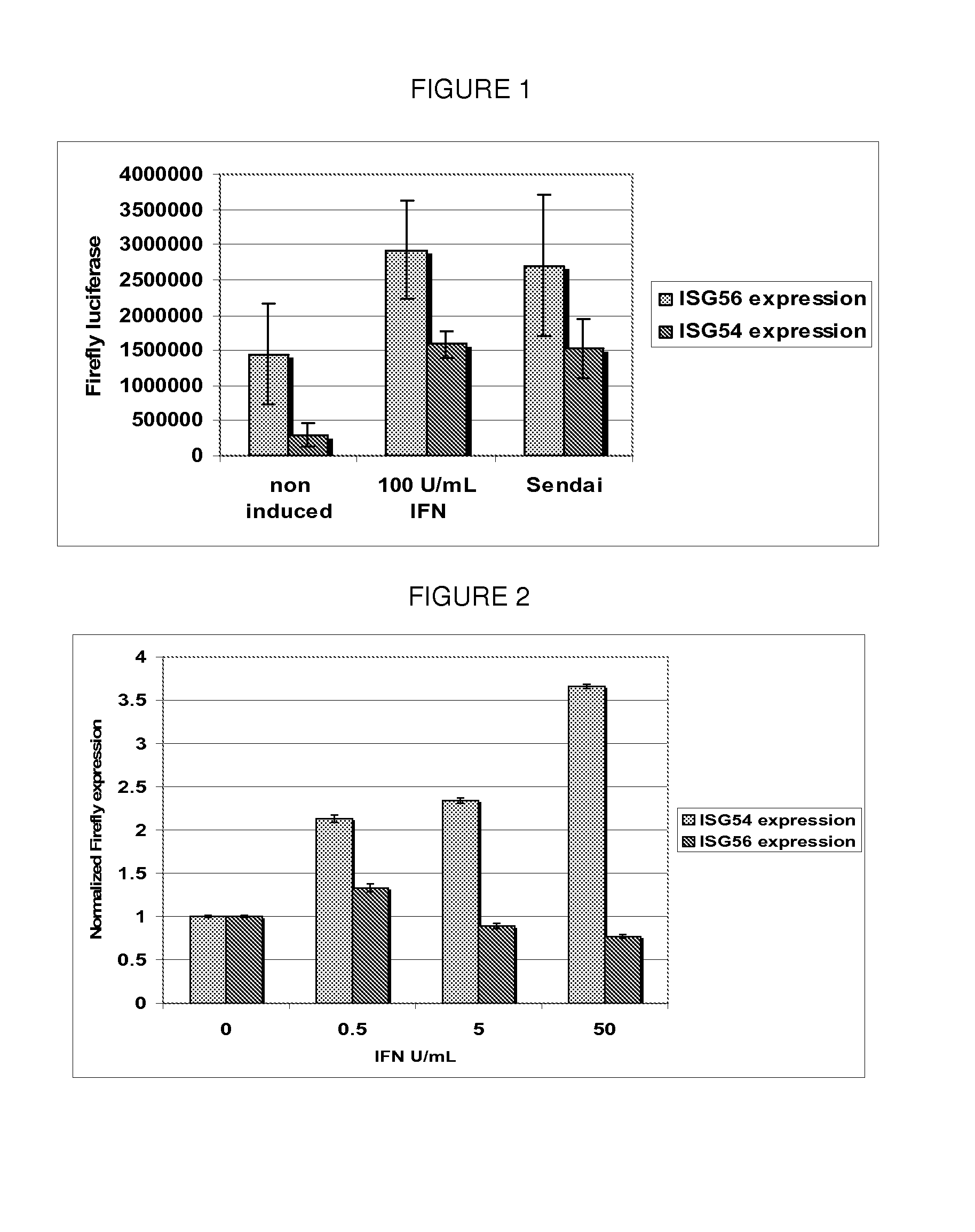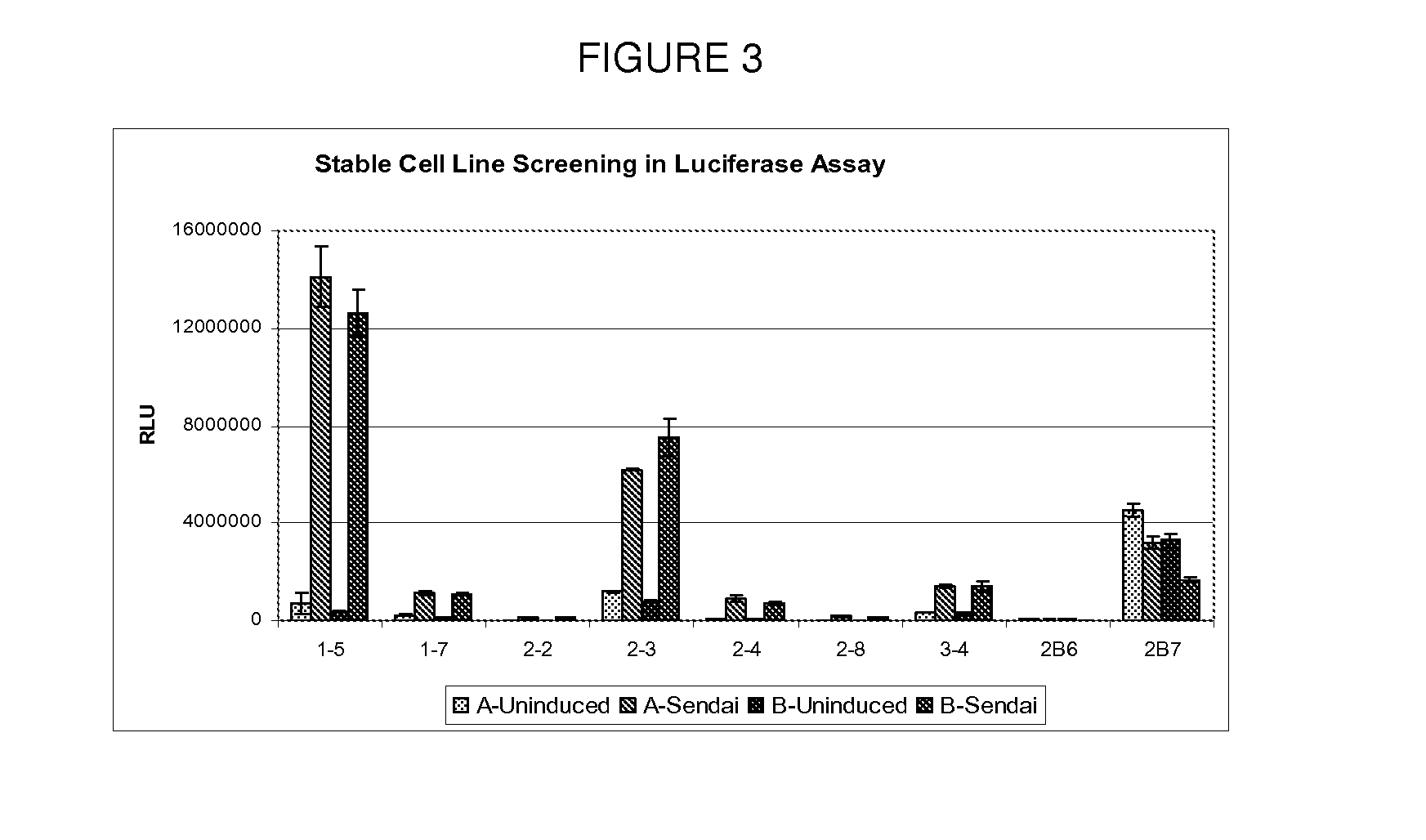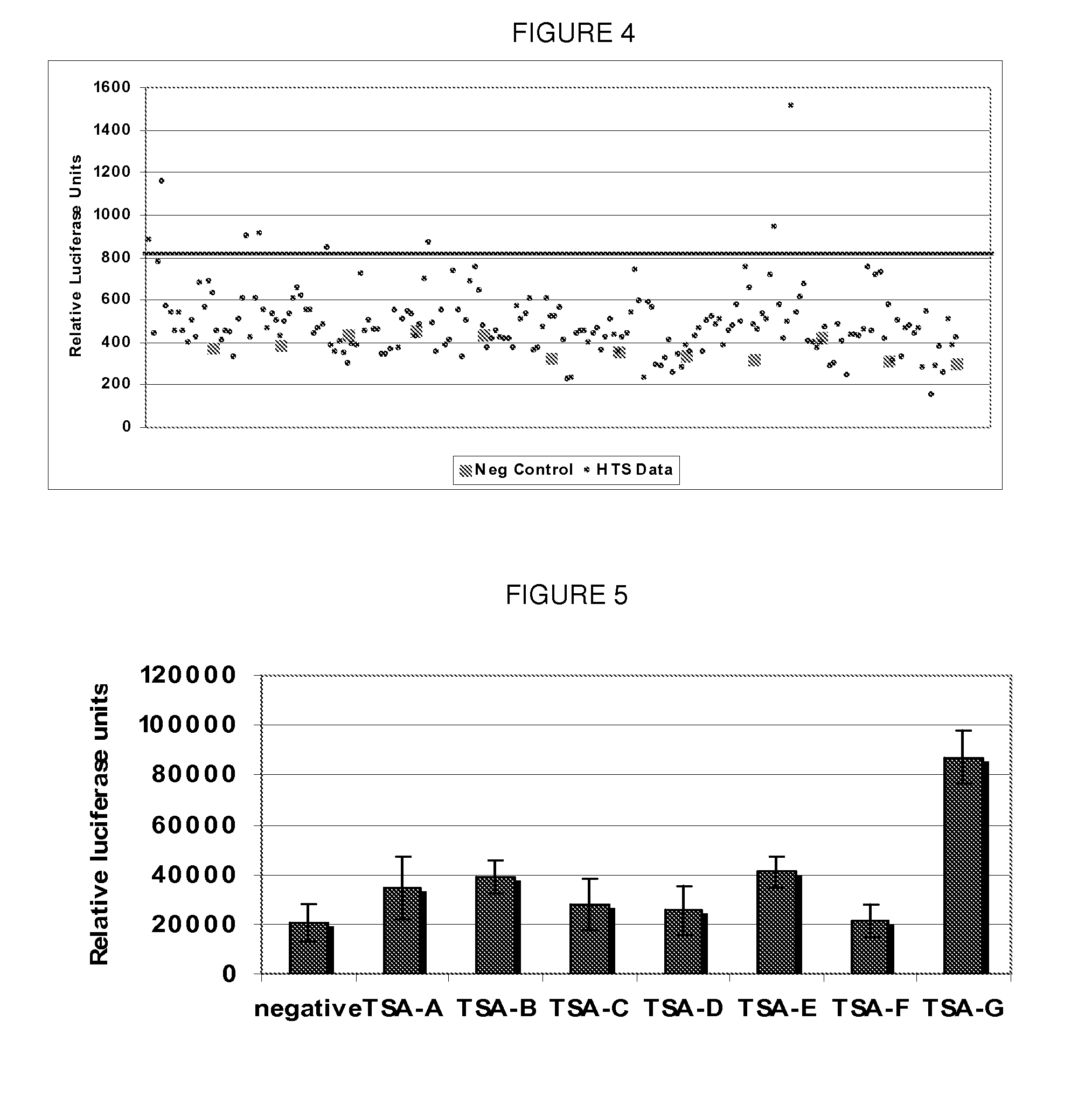Methods of Identifying and Using Anti-Viral Compounds
a technology of antiviral drugs and compounds, applied in the field of methods of identifying and using antiviral drugs, can solve the problems of limited antiviral drugs, large public health problems, and many poor effects, and achieve the effect of less susceptible and fewer side effects
- Summary
- Abstract
- Description
- Claims
- Application Information
AI Technical Summary
Benefits of technology
Problems solved by technology
Method used
Image
Examples
example 1
[0117]Reporter Huh7 cell lines were developed to stably express firefly luciferase utilizing the ISG54 promoter cloned from genomic DNA. These cell lines are responsive to RIG-I mediated stimulus including Sendai virus infection as well as IFN treatment and are utilized to identify RIG-I agonists through high throughput screening (HTS) of a small molecule library. Induction of reporter cell lines was optimized for cell growth and assay conditions that are used in the HTS to obtain the most sensitive and reproducible results. Additionally, a control cell line that expresses Renilla luciferase using the actin promoter was developed as a negative control. The actin cell line is utilized in a counter screen to identify compounds that cause nonspecific changes in global gene expression.
[0118]Cloning of ISG54 and β-actin promoter constructs: Actin, ISG54 and ISG56 promoter sequences were amplified from stock genomic DNA using the following primers:
ISG54 For_Sac1:(SEQ ID NO: 1)GGGAGCTCCTCC...
example 2
Screen of RIG-I Targeted Library in ISG54 Cell Lines
[0128]Introduction: A targeted library was formed using a computer modeling program to predict compounds that interact with the RIG-I repressor domain. From the initial screen 7 compounds were identified as activating ISG54 expression significantly above background. Initial hits were validated in three assays to determine dose response, cytotoxicity using a MTS assay and promoter specificity which eliminated any compounds that nonspecifically activated expression of the actin promoter. Compound hits were analyzed for IRF-3 nuclear translocation to confirm they were activating the RIG-I pathway. Additionally, molecules were confirmed to induce endogenous ISG expression both at the RNA and protein level.
[0129]Validated hits were then analyzed for antiviral properties against RNA viruses in cell culture, including hepatitis C virus (HCV) and Influenza A virus. Screening of this small compound subset confirmed that the disclosed cell b...
example 3
Example 3A
Identification OF RIG-I Agonists
[0161]To identify RIG-I agonists, a screening platform was used consisting of Huh7 cells harboring a luciferase reporter gene under the control of the ISG54 promoter. This promoter encodes tandem IRF-elements that bind activated IRF-3 (a RIG-I effector molecule) and an interferon (IFN)-stimulated response element that confers promoter induction by IFN-α / β. The assay conditions were optimized to yield low background under unstimulated conditions and reproducibly high levels of dose-dependent induction with positive control treatment such as Sendai virus infection. A small-molecule diversity library was selected to contain maximally diverse and drug-like compounds for agonist identification.
[0162]The results from the primary screen to identify molecules that induce ISG promoter activity are shown FIG. 12. A 20,000-member small molecule diversity library was screened at 10 μM to identify compounds that induce ISG54 luciferase reporter activity ...
PUM
| Property | Measurement | Unit |
|---|---|---|
| Volume | aaaaa | aaaaa |
| Volume | aaaaa | aaaaa |
| Gene expression profile | aaaaa | aaaaa |
Abstract
Description
Claims
Application Information
 Login to View More
Login to View More - R&D
- Intellectual Property
- Life Sciences
- Materials
- Tech Scout
- Unparalleled Data Quality
- Higher Quality Content
- 60% Fewer Hallucinations
Browse by: Latest US Patents, China's latest patents, Technical Efficacy Thesaurus, Application Domain, Technology Topic, Popular Technical Reports.
© 2025 PatSnap. All rights reserved.Legal|Privacy policy|Modern Slavery Act Transparency Statement|Sitemap|About US| Contact US: help@patsnap.com



